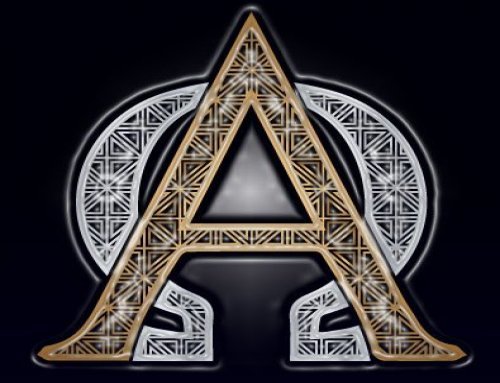“A diamond does not need a certificate”
Every (real) diamond has its own certificate issued by (for example) the GIA. The GIA is the “Gemological Institute of America. It is an organization that evaluates diamonds. By studying the certificates carefully, you will see that not all diamonds are the same. For example, diamonds can differ from each other in carat, color, clarity, and cut. The differences in these 4 characteristics (also known as the 4 Cs) determine the price of the diamond.
It is difficult to judge a diamond with the naked eye. For example, two similar diamonds may differ in purity. Even though you may not necessarily see this. Cut quality is also difficult to judge for the untrained eye. Every cut diamond sparkles. But the most beautiful brilliance appears only when all the facets are at the right degrees and the proportions are perfect. Two seemingly identical diamonds can give different brilliance under the same conditions. Therefore, always look at the diamonds’ certificates before you proceed with your purchase. This way you can be sure what the properties of your diamond are.
“It doesn’t say anywhere that this is a blood diamond, so it must be okay”
This is a very dangerous assumption. In addition to all the information that does appear on the certificate, there are some diamond characteristics that are not on it. One of those things is the origin of the diamond. There are just some areas where you just really don’t want a diamond to come from. The so-called blood diamonds or “conflict diamonds” come from conflict and/or war zones. The sale of blood diamonds perpetuates corrupt governments and encourages the sale of weapons to create conflict.
For upright people who want nothing to do with this, a certification process has been set up for equitable diamonds. Called the “Kimberley Process,” it states that every invoice for rough diamonds purchased must include an initials That initial is proof that the diamonds sold did not come from conflict zones.
“It doesn’t matter which laboratory graded my diamond”
Oddly enough, each gem laboratory can set its own standard for grading diamonds. Therefore, one lab can grade a diamond much more purely than another lab. Some dealers and retailers therefore prefer to go with a lab that grades stones sometimes as much as 1 to 2 degrees higher. This makes the margins higher for the seller. Thus, the diamond can be sold at an extra high price. As a buyer, however, you cannot verify this and thus simply pay too much for a less pure diamond.
This, of course, is not an honest deal. Fortunately, there are laboratories that are certified and qualified. If the diamond has a certificate from the IGI, GIA or HRD of Antwerp, you are in the right place. These agencies apply the true value of diamonds.
“If I negotiate well I can get the price down considerably.”
We fully understand that it may seem appealing to hope for the finest quality at the lowest price. The biggest possible diamond for the least amount of money. Just remember that the prices of diamonds with good certificates, with your desired grade, are mostly fixed and realistic. Do you want a lower price? Then you will have to compromise on quality.
All certified diamonds represent value for money. Bargains almost never occur. If something seems too good to be true, it usually isn’t. We sometimes hear great stories of cheap diamonds. But when we later take a closer look at these diamonds, you unfortunately come home cold. Often there is something wrong with the clarity, color, cut or carat of the diamond. If you are completely unlucky, it is not even a real diamond! Therefore, buy a diamond that you yourself like. A diamond lasts for generations and is a good investment because a diamond retains its value. For something like this, it is better to get one that you genuinely like.
“All diamonds are perfectly cut and polished.”
Polishing is a craft done by hand and a diamond is a natural product. Sometimes a polisher has to go to extremes to cut a stone perfectly. For example, he may choose to deliberately deviate slightly from the standard to get a stone beautiful. He may, for example, come across an ugly piece in the stone.
A good polisher makes every effort to carve out this so-called “pique“. If that is not possible, he polishes the diamond so that the inclusion ends up in another place. He thus places the inclusion so that it takes away as little of the brilliance of the diamond as possible. It is therefore important that a beautiful diamond be polished by a good polisher.
“It comes with a certificate, so it must be correct”
If you want to buy a large and high quality diamond, do it from a good and reliable supplier. Here you can be sure that you will get the correct certificate with the diamond. Make sure that all the diamonds on your purchased jewelry are of the same quality. This quality should also appear on the certificate you get with it.
If your new jewel consists of different types of diamonds, they are listed separately on the certificate. But also delve into the jeweler’s reputation. The better his name, the more certain you are that the value of the diamonds is good. Check reviews, the company’s website and social media and read the comments on them.
“Diamonds are cheaper abroad”
There are many stories about places where diamonds would be available a lot cheaper. Examples include:
- A big jewelry fair
- A major sale
- Abroad or on a cruise
- Online only stores
Myth 1: Diamonds are cheaper at a major jewelry fair
Large fairs rarely sell the highest quality stones. This is because at the fairs, companies often have to pay high prices for booths. Travel costs and associated insurance are also high. The seller will always factor that into the diamond price. Who do you think ends up paying for those extra costs?
Myth 2: Score cheap diamonds during sales
Diamonds and jewelry in general do not have “factory prices” unlike, say, clothing. As stated in a previous assumption, diamonds have a price that is fairly fixed. Statements with phrases like “Sale” and “50% off,” will have to be taken with a grain of salt as far as diamonds are concerned. Those who fall for such promises will usually end up disappointed.
Myth 3: Diamonds are cheaper abroad
Rough diamonds have what is called “a global price in dollars.” Therefore, they are not (much) cheaper in one country than in another. There are many stories on the Internet of people who were tempted to buy a diamond abroad. Once back home, they only find out that they have been scammed. In some cases, the diamonds are not even real and the metals are of poor quality.
The only way to sell cheaper than others is to cut costs. After all, a good diamond polisher comes at a cost. Just like anyone else who is good at what he does. A mediocre diamond polisher costs less, but also delivers poorer quality. In addition, the seller can save on the materials in which the diamond is set. Silver is cheaper than white gold and 9-carat gold is obviously cheaper than 18-carat gold. Still, it seems a great waste to put in a beautiful diamond then. Therefore, also make sure that you are buying a real diamond. Of course, you can spend a small amount on a piece of jewelry as a memento of a trip or trip abroad. Just don’t spend thousands of dollars if you are not sure it is real.
Myth 4: Diamond sellers without a physical store are cheaper
You don’t have to search long on the Internet to find businesses that sell diamonds online. Assuming they are honest companies, they will never really be much cheaper than regular companies. Despite the fact that they may pretend to be cheaper: after all, we are all tied to the global cost prices of diamonds.
Every business has its costs. Whether it’s a jeweler, goldsmith or online store. Some have higher personnel costs and others have higher insurance costs, for example.
This is still the most favorable case. Online are also many ” bad” diamond sellers. When you buy a diamond online, you can never verify whether the certificate really belongs to that diamond!
Conclusion
A beautiful diamond isn’t something you buy frequently. Therefore, trust the expertise and integrity of well established businesses with a reputation on the table. Don’t try to outsmart them by dealing with shady figures, seemingly offering you the deal of a lifetime. Because, mostly they are the ones getting the better end of those deals.






